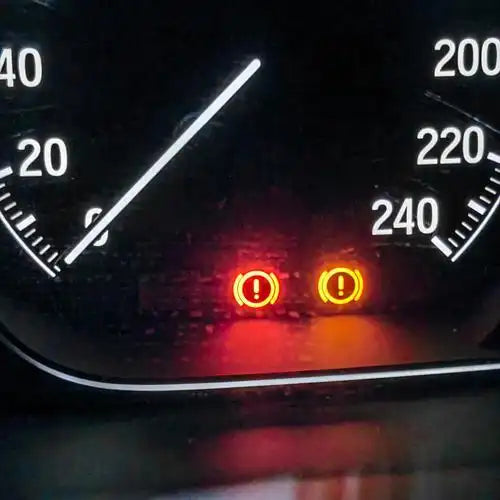
Understanding LED bulbs and CANbus
Share
Why need to decode when modifying LED lights?
Modified LED lights require decoding, mainly because there are differences in power and current between LED lights and original halogen lights, which will be misjudged as faults by the on-board computer. Usually, the power of the original halogen bulb is about 55W, while the power of the LED light is only about 30W. The power reduction reduces the current. After the on-board computer detects this change, it will think that there is a problem with the headlight and light up the warning indicator. Decoding is to simulate the normal working state of the original car by adding resistance and other methods, so that the on-board computer will no longer issue an alarm.

What is a CAN Bus System?
CAN Bus stands for Controller Area Network Bus. Prior to the creation of the CAN Bus system, vehicles housed various electronic control units, or ECUs, that controlled the wiring for different parts of the vehicle system. Engineers wanted to develop a way for these ECUs to communicate with one another in a bus communication system. Thus, the CAN Bus system was created to allow individual vehicle systems to report if they were functioning properly.
Does Your Car Need CANbus LED Headlights?
CAN Bus stands for Controller Area Network Bus. Prior to the creation of the CAN Bus system, vehicles housed various electronic control units, or ECUs, that controlled the wiring for different parts of the vehicle system. Engineers wanted to develop a way for these ECUs to communicate with one another in a bus communication system. Thus, the CAN Bus system was created to allow individual vehicle systems to report if they were functioning properly.
In the process of upgrading LED headlights, not all models need Canbus decoding. Due to the characteristics of their own design, the on-board computer of some models is less sensitive to current changes, or the LED light itself has been designed to be compatible with the original car system, making it difficult for the on-board computer to detect current changes. In this case, no additional decoding is required. However, for some models, especially those from Europe and America, such as Volkswagen's Sagitar, Magotan, Passat, Octavia, Hao Rui, Tiguan, etc., as well as BMW's 2 Series, 3 Series, 5 Series, X1, X3, etc., and American JEEP and other models, halogen lamps must be converted to LED lamps with a decoder. The function of the decoder is to connect the power plug of the bulb, so that the compatibility problem can be solved. For the case of upgrading the original car xenon lamp to D series LED lamp, a decoder is usually not required, and it can be directly plugged in. Such an upgrade process is relatively simple and does not require too many additional steps.

However, in order to ensure that the modified LED lamp can perfectly adapt to the vehicle's electronic system, provide good and stable lighting effects, and avoid unnecessary troubles caused by technical differences, when modifying LED lamps, it is still necessary to understand whether the vehicle needs decoding and the correct decoding method. First, you must determine whether your model needs a decoder. If it is a model that requires a decoder, remember to prepare the decoder, otherwise it may cause the light to not light up or other compatibility problems.
The ways of CAN Bus
Decoding with capacitor
This method is usually implemented by connecting a capacitor in parallel between the positive and negative poles of the power line, and its purpose is to pass the computer's bulb detection. According to the size of the detection signal output by the computer, we usually choose a capacitor of 22000UF or 4700UF. This method is mainly aimed at pulse detection and waveform detection models.
Resistor decoding
It is based on Ohm's law R=U/I. For example, when the voltage is 14V after the vehicle is started and the halogen bulb current is 5A, a 2.8Ω resistor is required for decoding. However, this method has an obvious disadvantage, that is, the resistor itself will generate a lot of heat, so it is generally not recommended for use in automotive circuits.
Computer soft decoding
Modify the CAN protocol of the driving computer. This method is mainly aimed at Volkswagen, Skoda, Audi, BMW, Ford, Mercedes-Benz and other models. By using the engineer computer and decoding software provided by the car manufacturer, we can modify the vehicle's coding to achieve decoding.

CAN Bus ballast for decoding
The last method is to use a CAN Bus ballast for decoding. This ballast simulates the load resistance to deceive the headlight signal detection of the driving computer, thereby achieving the purpose of decoding.
What Are CANbus LED headlights?
CANbus LED headlights have an inbuilt CANbus decoder. The decoder helps the LED bulb simulate the electrical load of the original halogen bulbs in the circuit, preventing false bulb failure warnings and other issues.
Halogen bulbs require more power than LED bulbs. When you replace a halogen bulb with an LED bulb, the CANbus system may detect that the bulb is drawing less power than it should under normal conditions. It will thus try to alert you to this ‘problem’.
The built-in resistor in a CAN bus bulb ensures that its power draw is closer to that of a halogen bulb. As a result, the CANbus system won’t be able to tell the difference between the two in most cases.

